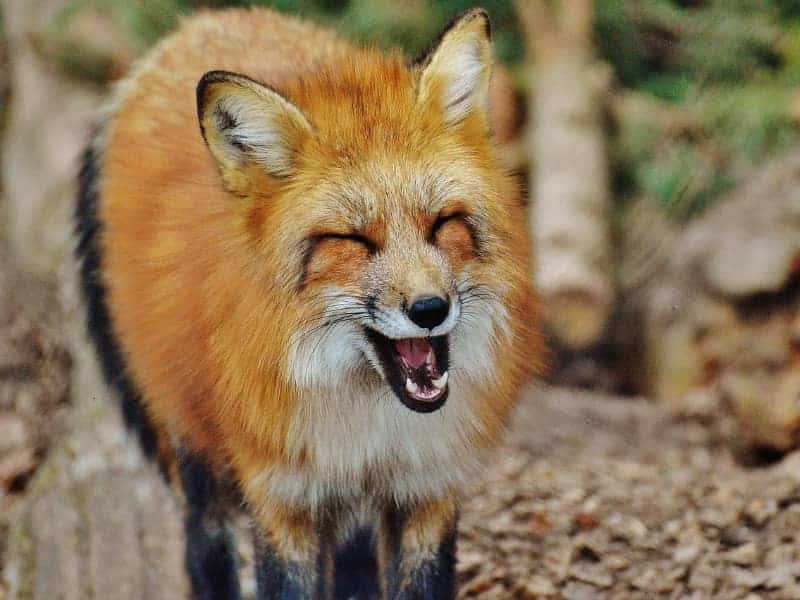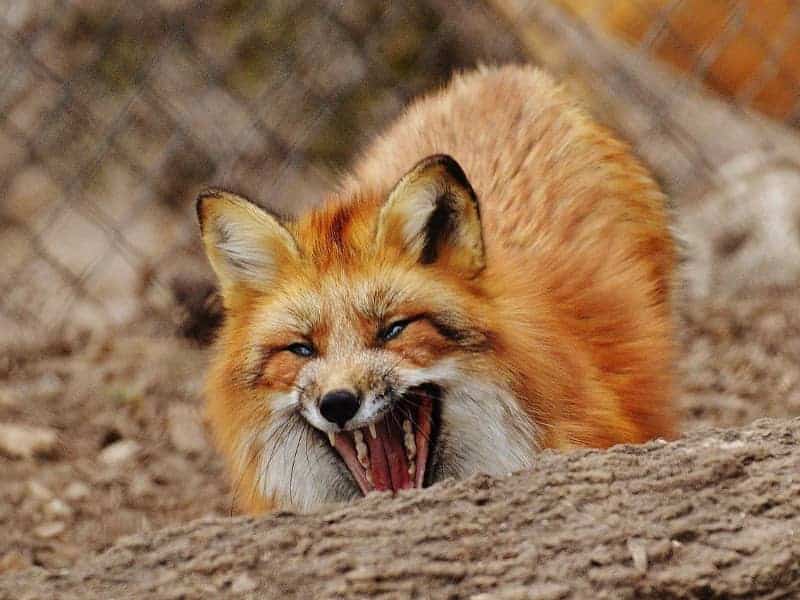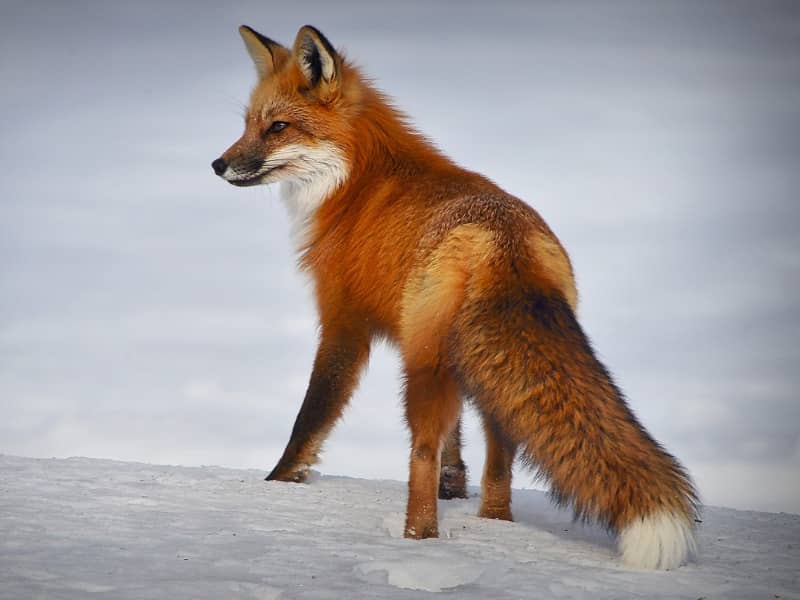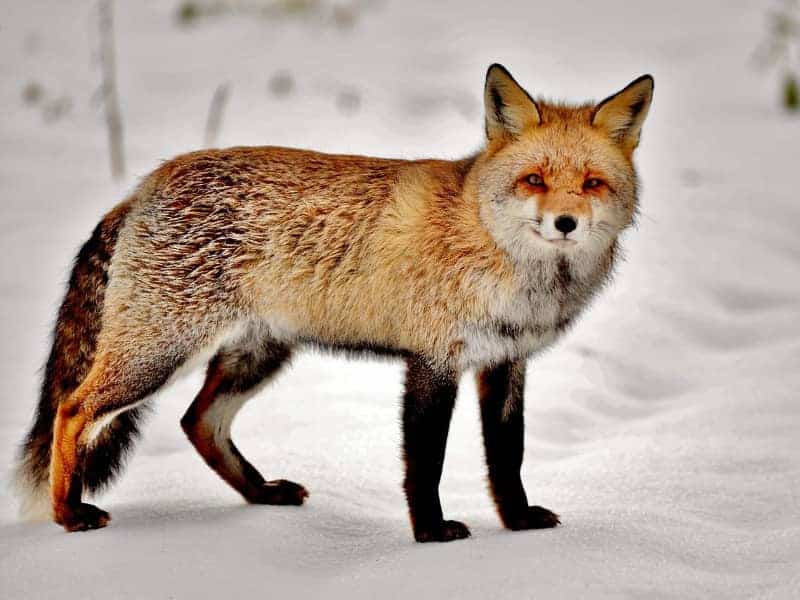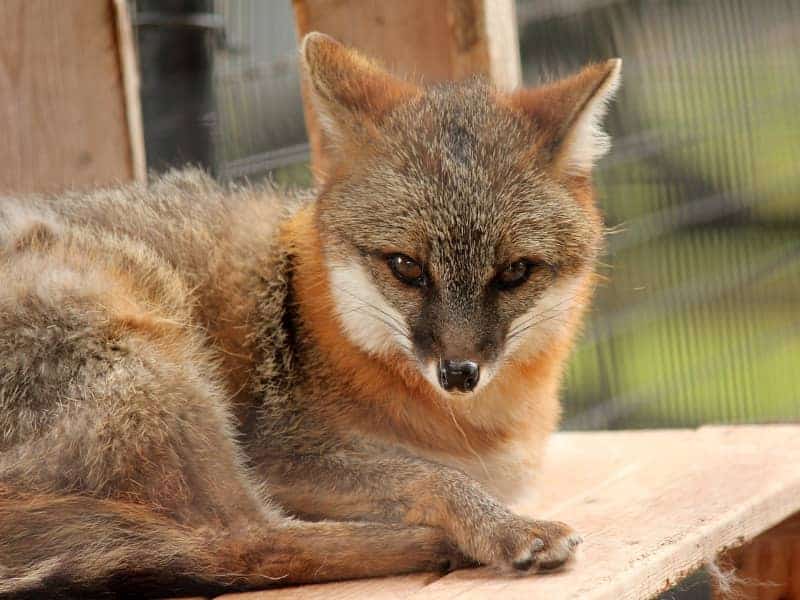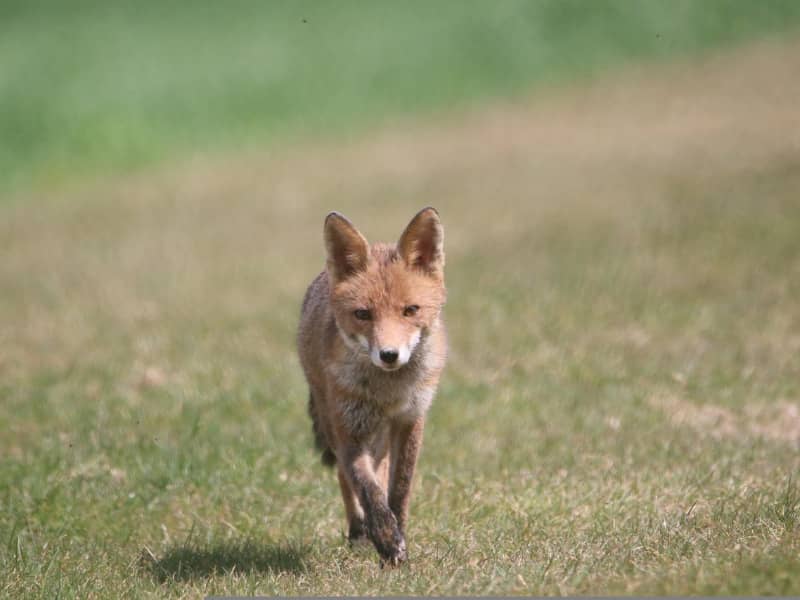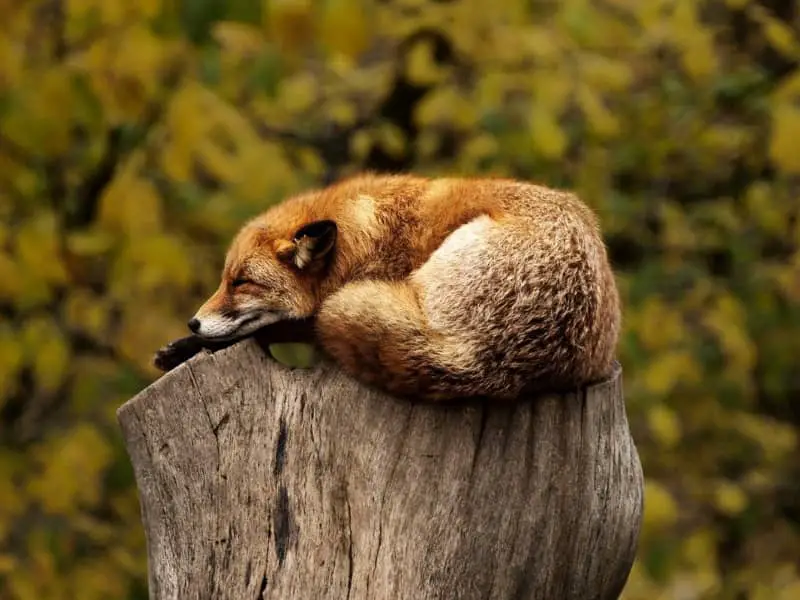
Sleeping fox
Some of you may have spotted one before, a sleeping fox. But the sleep of the fox can not be compared with a human sleeping behavior. To see such a fox, presumed to be asleep, will probably just lie down to rest. The fox does this in a wide variety of places. For proper sleeping, however, he retreats to his den.
Does the fox sleep at night?
No, the fox does not sleep at night, because it is a subject here. Therefore, sleep takes place almost exclusively during the day in his den. Sets the dawn, begins the Fox roaming his territory and looking for food.
You will almost never see several foxes, because the fox is in principle a loner. Only in the mating season this behavior changes for a few days or weeks.
How long does a fox sleep?
The number of hours a fox sleeps are difficult to track in the wild. For foxes living in captivity, the sleeping time is between 9 and 10 hours a day. Therefore, it can be assumed that this is also the case in the wild. In addition, there are a few hours during which the foxes rest.
Sleeping fox, where does the fox sleep?
Here you need to clearly distinguish between resting and sleeping. In a place where the fox can rest, it is not choosy. This can be under bushes, in a hollow tree trunk, or even in the tall grass. Regularly Foxes also already in gardens discovered where they have made themselves comfortable in flower beds or hedges.
However, a sleeping fox prefers an enclosed space. This can be its own cave, but also constructions of other animals. Here he is also not interested in whether this burrow, or this cave is still inhabited, because he knows that he can drive the animal away, or this animal is afraid of him and retreats.
Does the fox hibernate?
A Fox does not hibernate and also a hibernation, as with other animals does not take place. It is active all year round and even has increased activity during the mating season, which falls in the months of January/February. An adult fox needs between 150 and 300 g of food per day. If it is possible for the fox, this food is caught fresh.
Only in exceptional cases, the fox creates storage facilities. For this camp, the fox digs a small depression in the ground, in which he deposits his supplies and covers this depression with leaves and soil. The fox has an excellent hearing and so it can hear mice moving under the snow cover even in the case of a dense and closed snow cover.
This excellent hearing allows him to catch the mice with a targeted jump, without anticipating them. A fascinating spectacle for the spectator, made possible by the fox's good sense of hearing and smell.
Sleeping fox, why does he turn in circles before sleeping?
Before the fox goes to rest, it turns in a circle several times before lying down. You may have observed this behavior before with a fox. This behavior is a so-called wild-typical behavior of animals. Foxes as wild animals do this and our dogs, descend from the wolf, so they also show this behavior.
Researchers have observed this behavior in more detail and have found several explanations and conjectures for it.
The first idea is to make the sleeping place comfortable. By turning and partially rooting, the animals want to make their sleeping place comfortable. At the same time, they look for the most favorable lying position. During the rooting and scratching, small stones and disturbing unevenness are effectively removed from the sleeping place.
Especially in summer, dry and hot areas of the earth are removed in the process. Underneath, moist soil is revealed and the sleeping fox thus has a cool and pleasantly tempered place to rest.
At the same time, the fox ensures its own safety by turning. He can thus check whether the place is really safe. Other animals in the vicinity are scared away by the sounds and will no longer disturb him in his resting phase.
Another theory is that the fox tries to cover its own smell by pawing. Thus, it makes itself invisible to enemies, because a typical smell adheres to the paws of the fox, which for other animals means a sign of the presence of a fox in the vicinity.
While the fox is sleeping or resting, these paw glands are inactive, so no more scents are spread. Thus, the sleeping fox can make itself more or less invisible from enemies at its resting place.
Author

-
Garden animal - A life with nature
Welcome to my animal blog! My name is Dirk and I am happy to take you on my journey through the fascinating world of animals and gardening.
Born 54 years ago, I have had an insatiable curiosity for the animal world around me since childhood. Although I have moved professionally in other industries, my true passion has always been animals and nature. It is remarkable how a small garden has become such an important part of my life.
Many of my fondest memories are associated with the animals that share our home. Whether it's the curious squirrels that scurry across the trees in the morning, the colorful variety of birds that visit our feeders, or the busy bees and butterflies that pollinate our flowers, every moment with them is invaluable to me.
This blog is my contribution to share my experiences, discoveries and insights with like-minded people. Here I will share stories of unforgettable encounters with animals, give tips on gardening and creating wildlife-friendly habitats, and take you on my journeys through nature.
Thank you so much for being here!
Cordial,
Dirk aka garden animal
Last posts
- 27. February 2024PetsVeganes Hundefutter – Grün und Gesund?
- 18. January 2024ChickensOregano für Hühner
- November 27, 2023HamsterDiurnal hamsters
- November 24, 2023HamsterHamster hammock

